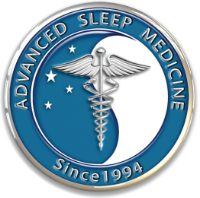There are a variety of treatment options for sleep apnea patients who have been diagnosed with sleep apnea.
PAP (Positive Airway Pressure) Therapy
Positive Airway Pressure devices deliver pressurized ambient air through the throat, keeping the airway open and eliminating apnea events. The pressurized air is delivered via a tube and a mask worn over the face.
PAP is the most effective treatment for sleep apnea and can potentially improve the patient’s sleep overnight, dramatically improving the quality of life for individuals afflicted with sleep apnea. PAP treatment is nearly 100% effective at eliminating the negative effects of sleep apnea.
There are many different types of surgeries that attempt to cure sleep apnea. Here are some of the more common ones:
- Removing throat tissue. Some types of surgery physically remove some of the tissue that falls back into the throat during an apnea. Removed tissue can include the uvula, part of the roof of the mouth, the tonsils, and even part of the tongue.
- Removing the tonsils and adenoids in children. This type of surgery is remarkably successful, with a 75%--100% success rate in children with oversized tonsils.
- Bimaxillary advancement surgery. This involves moving forward both the upper and lower jaw to expand the airway. (Learn more here.)
- Upper Airway Stimulation. This type of surgery involves placing a pulse generator inside the body that sends electrical pulses to the tongue, causing it to move forward and open the airway. (Learn more here.)
- Learn more about types of sleep apnea surgery.
Sleep apnea surgery is less effective than PAP treatment. It is more invasive and can entail complications and a recuperation period. However, it can be effective in certain circumstances and may be required if PAP treatment does not work for an individual.
Dental Devices

Dental devices work by trying to keep throat tissue from sagging into the windpipe. There are two main types:
- Mandibular Advancement Device (MAD): This pushes the lower jaw forward and downward, which helps prevent blockage in the airway.
- Tongue Retraining Device (TRD): This is a splint that holds the tongue in a forward position, preventing it from falling backward during sleep and obstructing the airway.
Dental devices are also not as effective as PAP treatment, but can be an option for people who cannot commit to PAP compliance.










